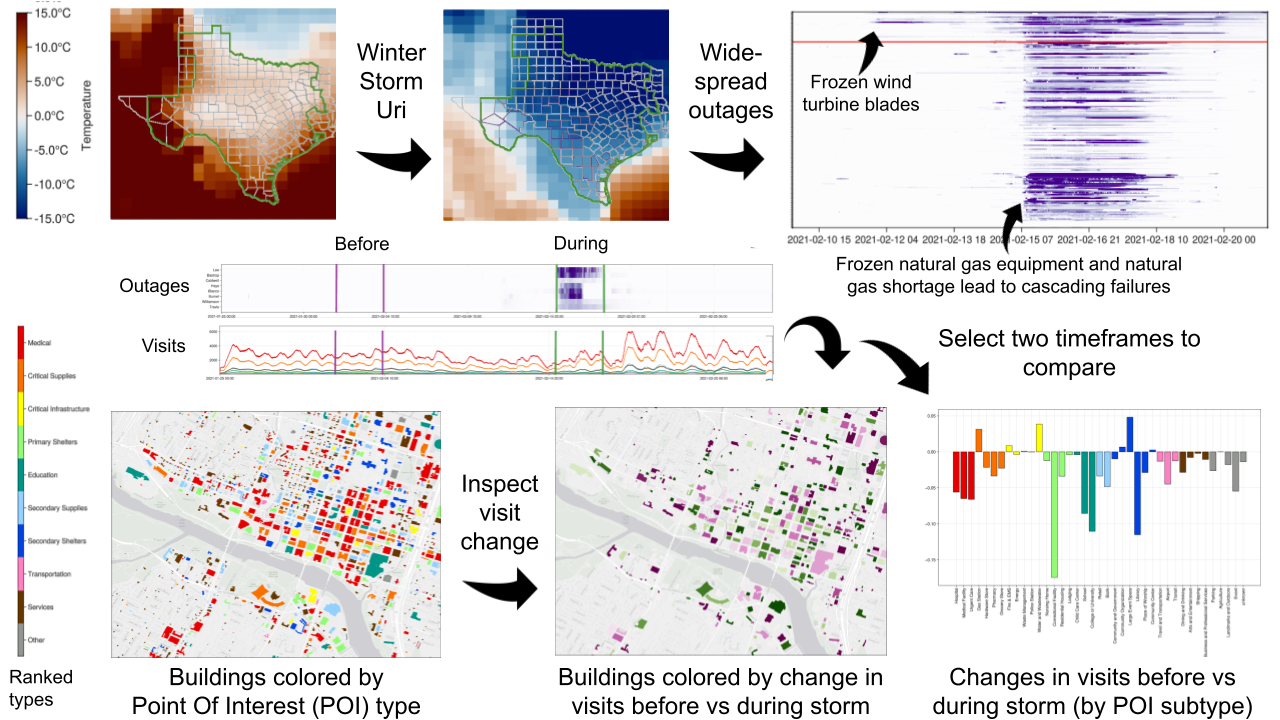Evaluating the Impact of Power Outages on Occupancy Patterns During the 2021 Texas Power Crisis
Andy S Berres - National Renewable Energy Laboratory, Golden, United States
Baldwin Nsonga - Institute of Computer Science, Leipzig University, Leipzig, Germany
Caitlyn Clark - National Renewable Energy Laboratory, Golden, United States
Robert Jeffers - National Renewable Energy Laboratory, Golden, United States
Hans Hagen - University of Kaiserslautern, Kaiserslautern, Germany
Gerik Scheuermann - Leipzig University, Leipzig, Germany
Room: Bayshore VI
2024-10-14T16:00:00ZGMT-0600Change your timezone on the schedule page
2024-10-14T16:00:00Z

Fast forward
Abstract
Large-scale power outages, such as those caused by extreme weather events, have a big impact on human behavior. A short power outage is merely a nuisance for most, and may not change people's locations. An outage that lasts for a few hours can result in spoiled food and medical supplies, and people will have to restock spoiled items. Long outages result in temperatures outside tolerable levels in homes, and may prompt people to acquire supplies, such as generators and gas, or change location. The long outages during Winter Storm Uri in Texas resulted in millions of dollars in property damage due to freezing pipes. This level of damage is expected to result in a sharp increase in supply runs and contractor activity. In this paper, we present a tool to explore differences in visiting patterns before, during, and after power outages. It allows to compare different points of interest like medical facilities, grocery stores, hardware stores, and other types of businesses.